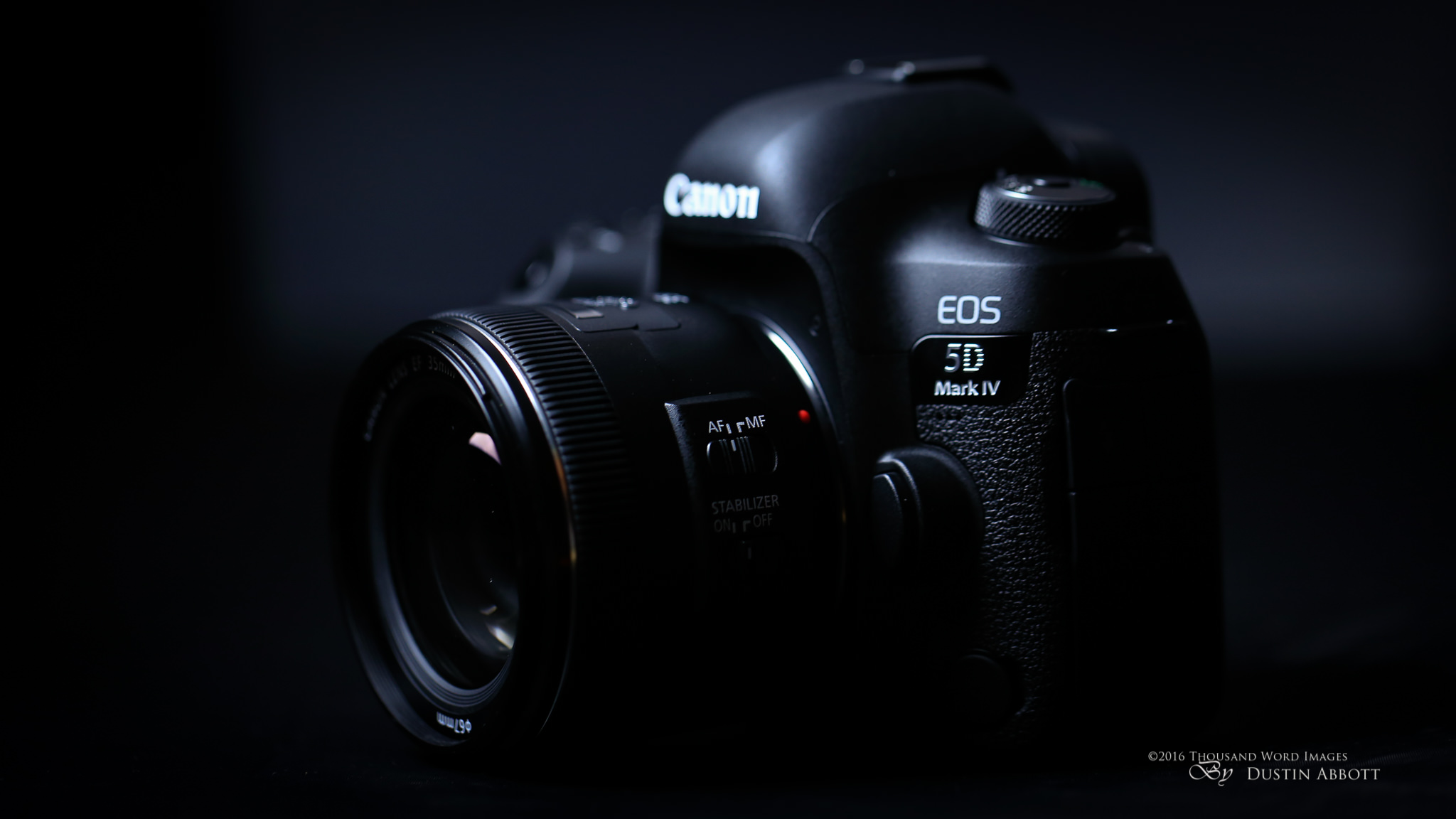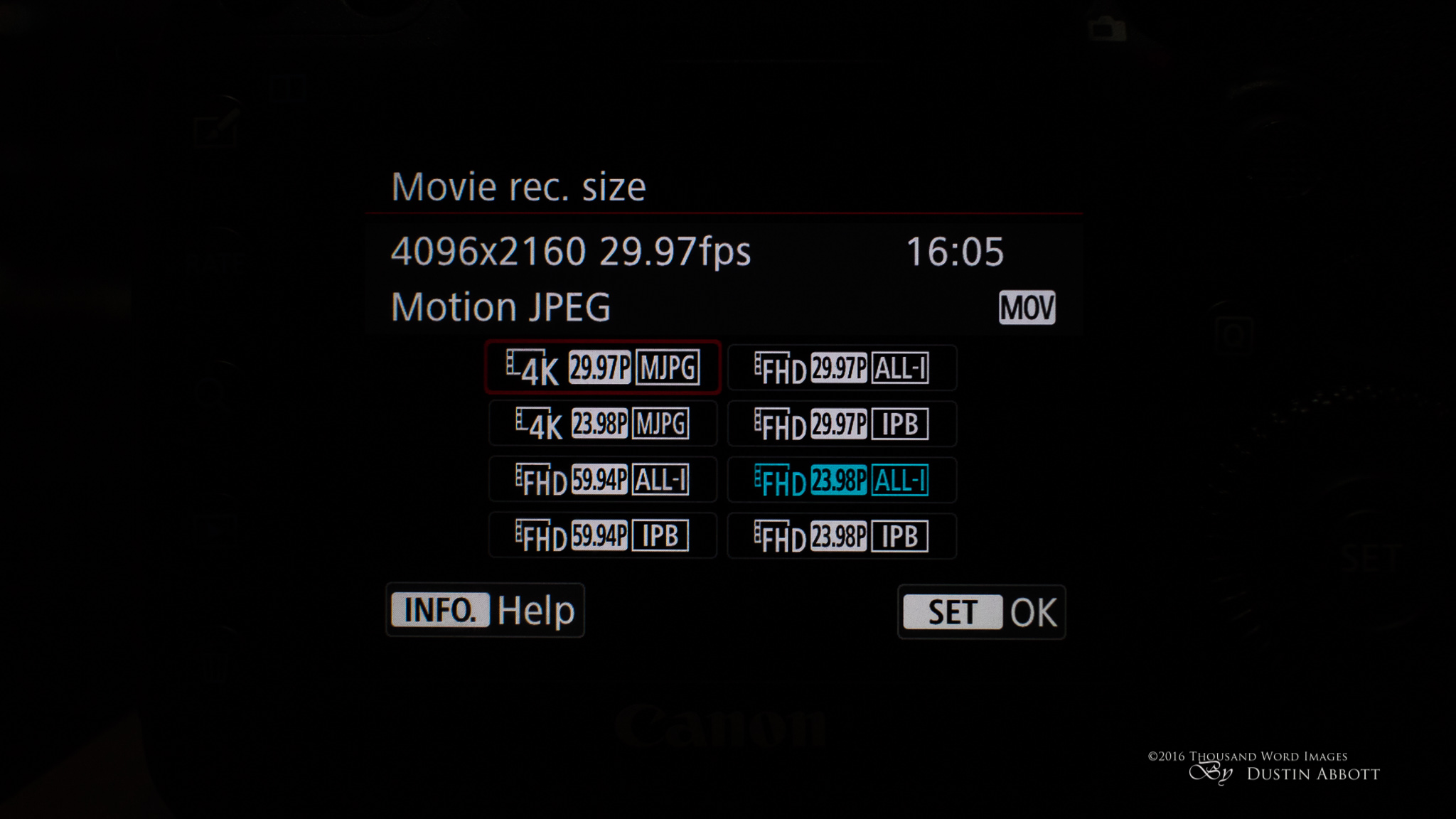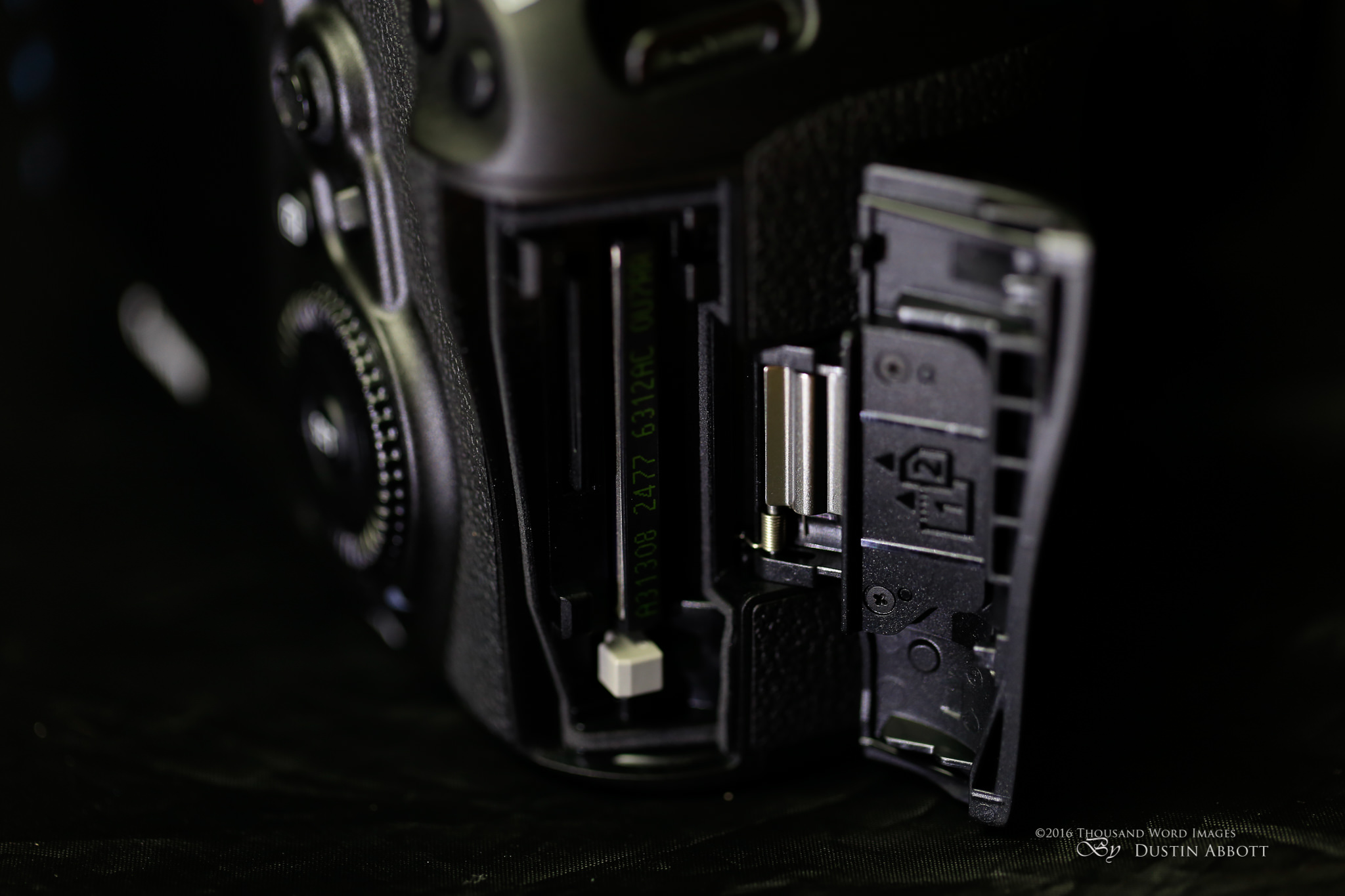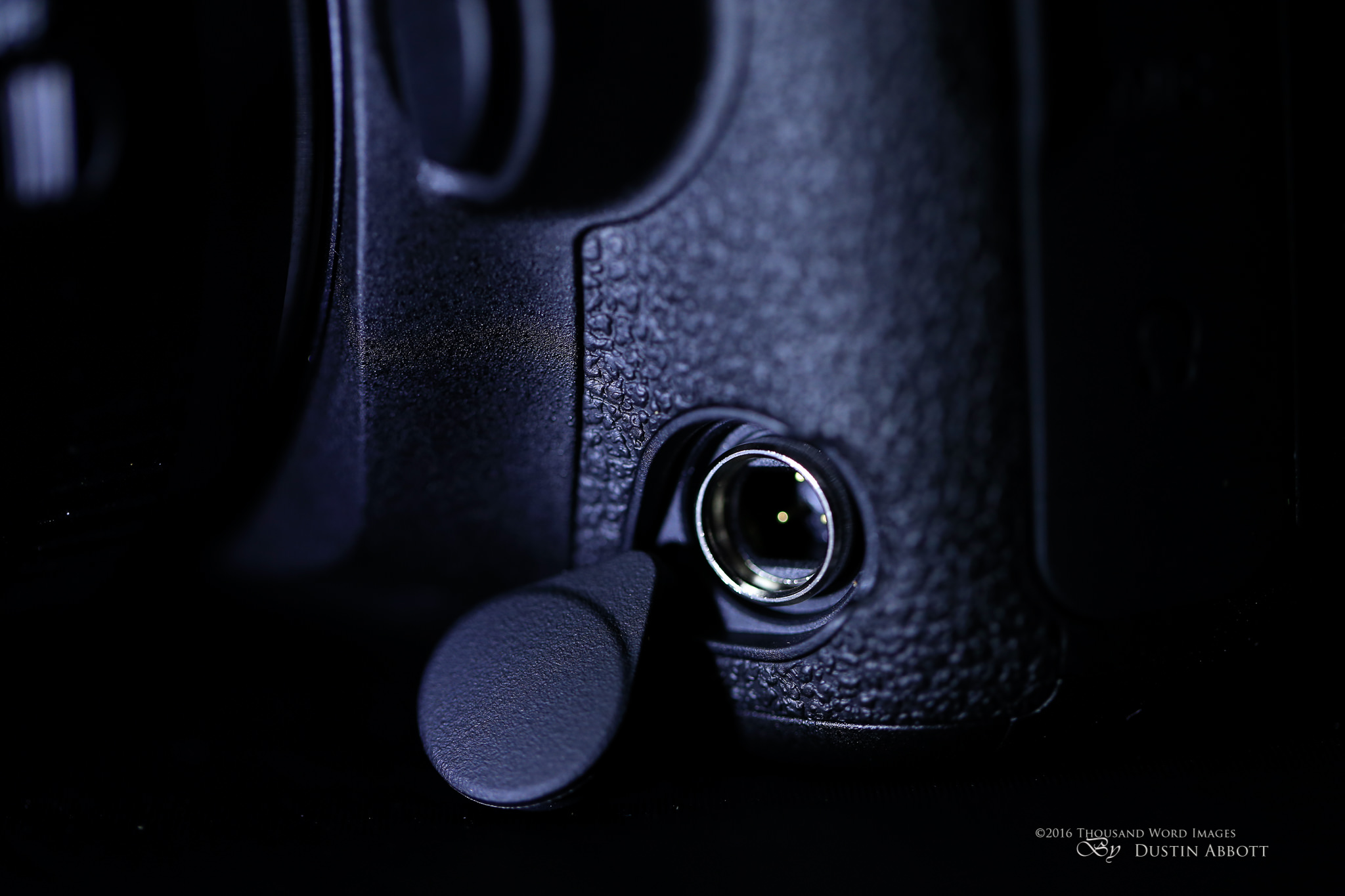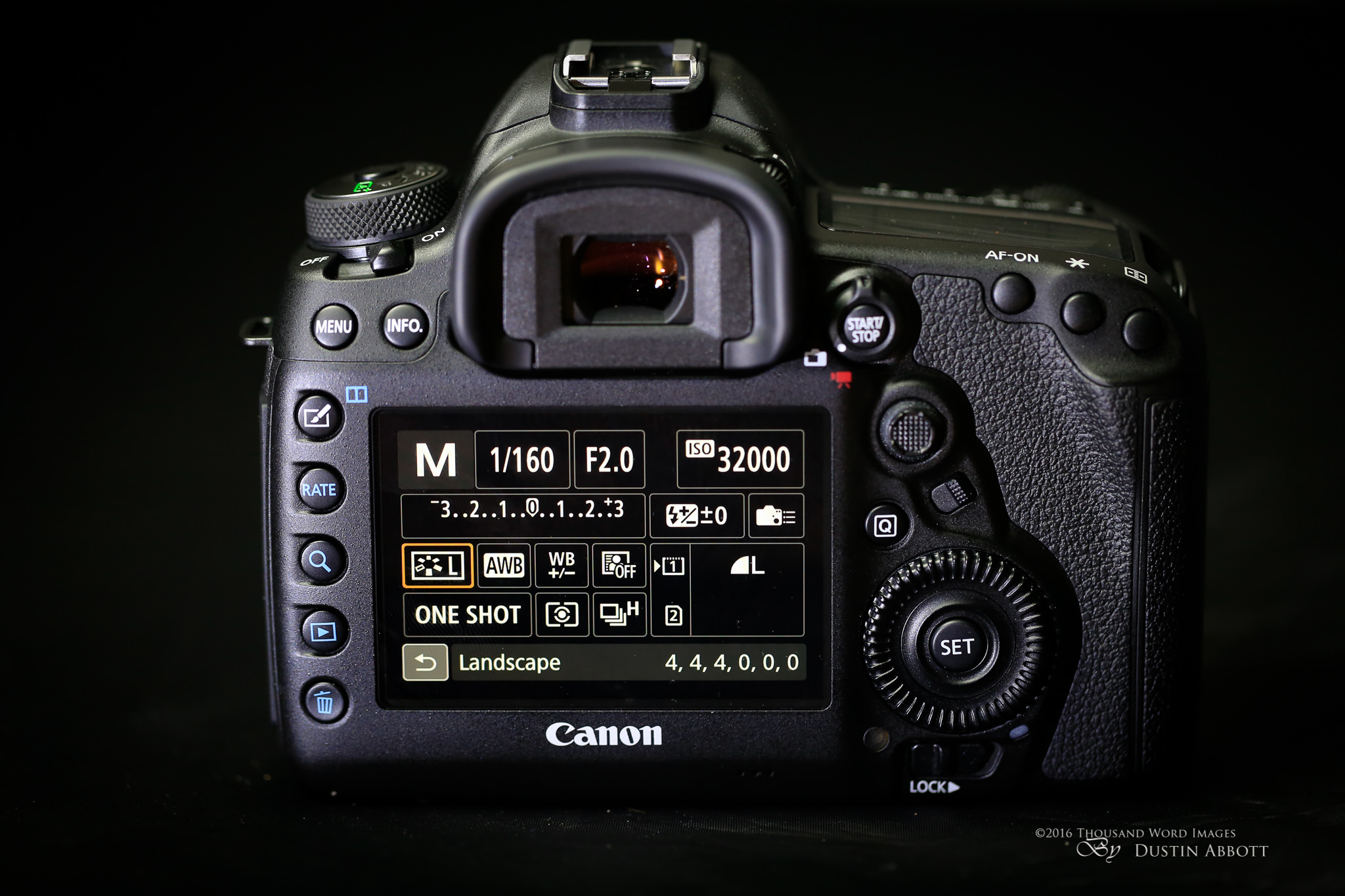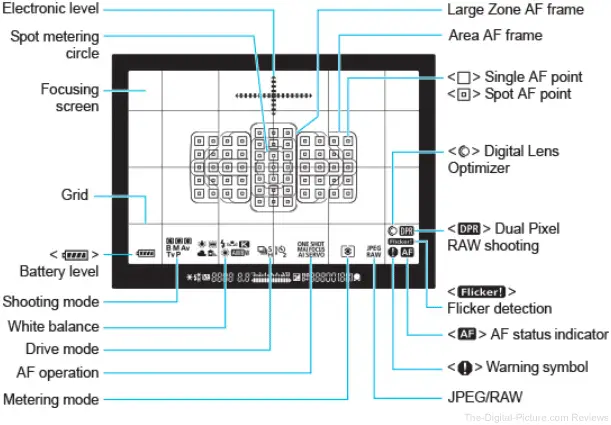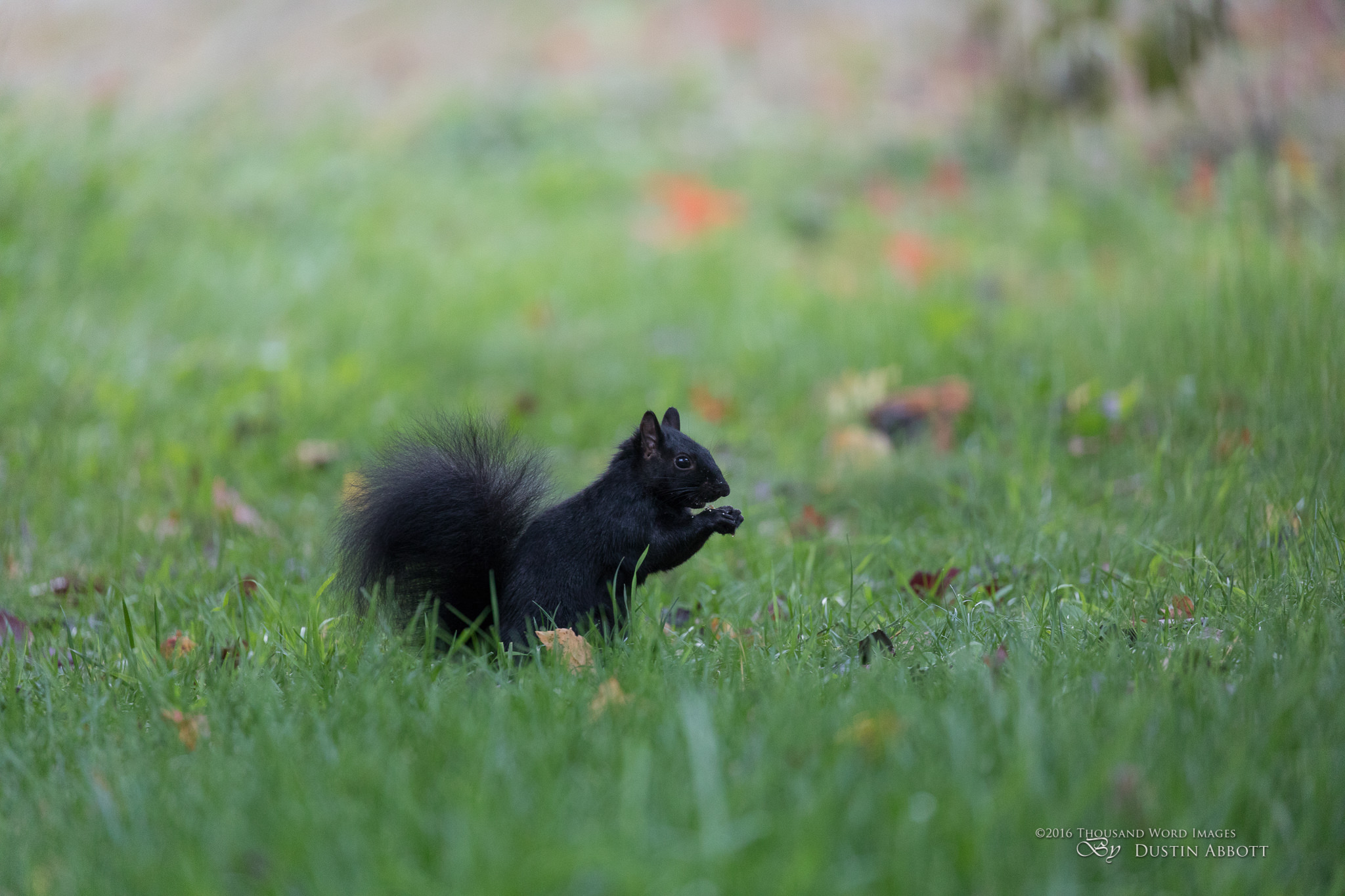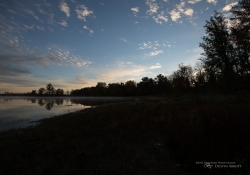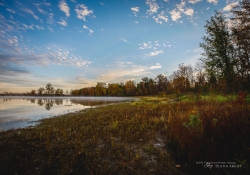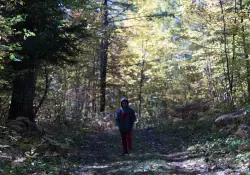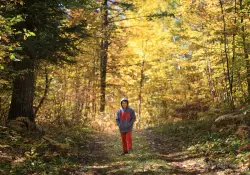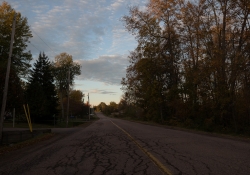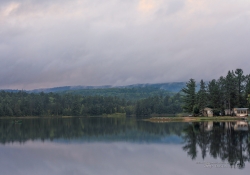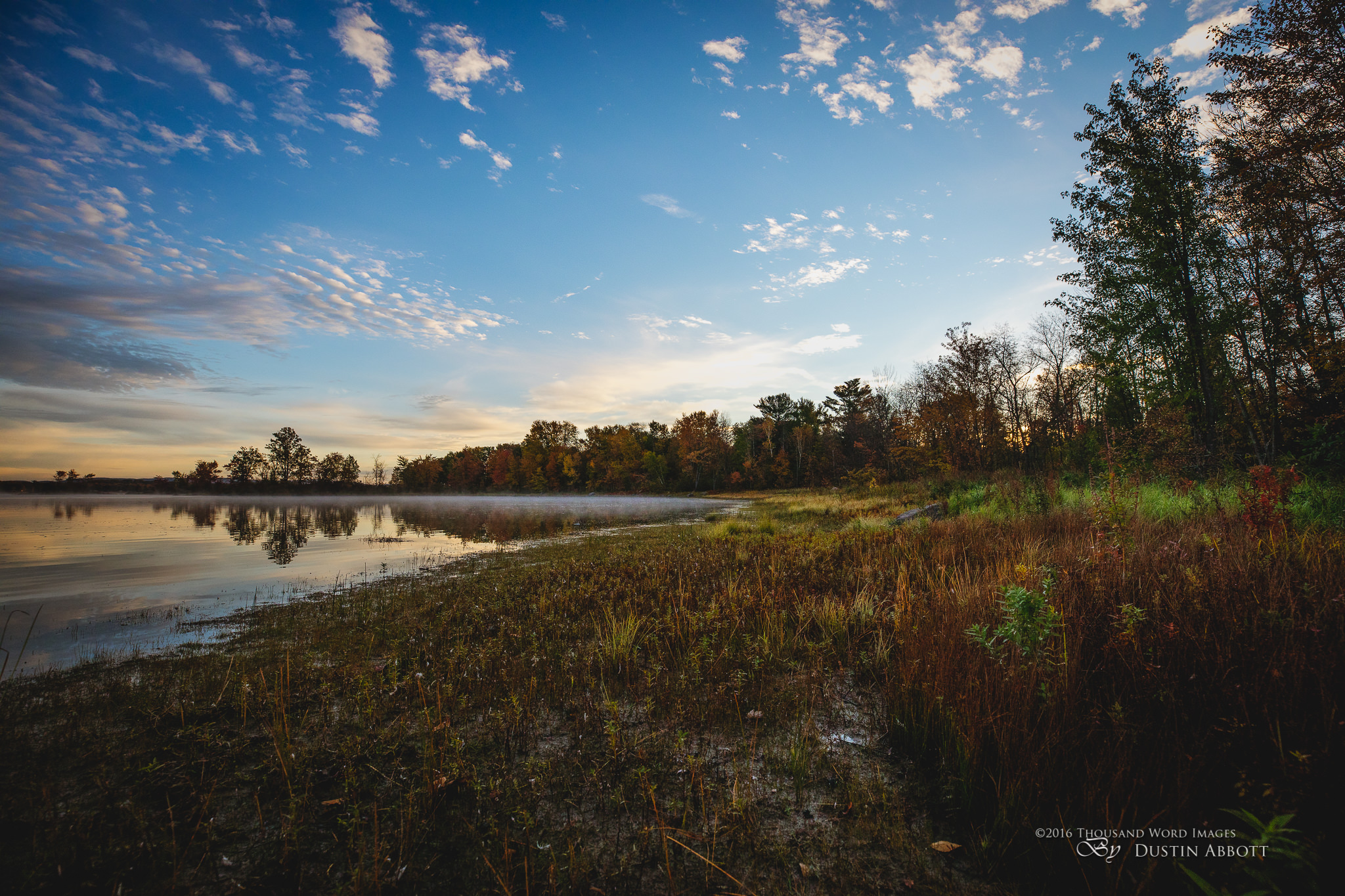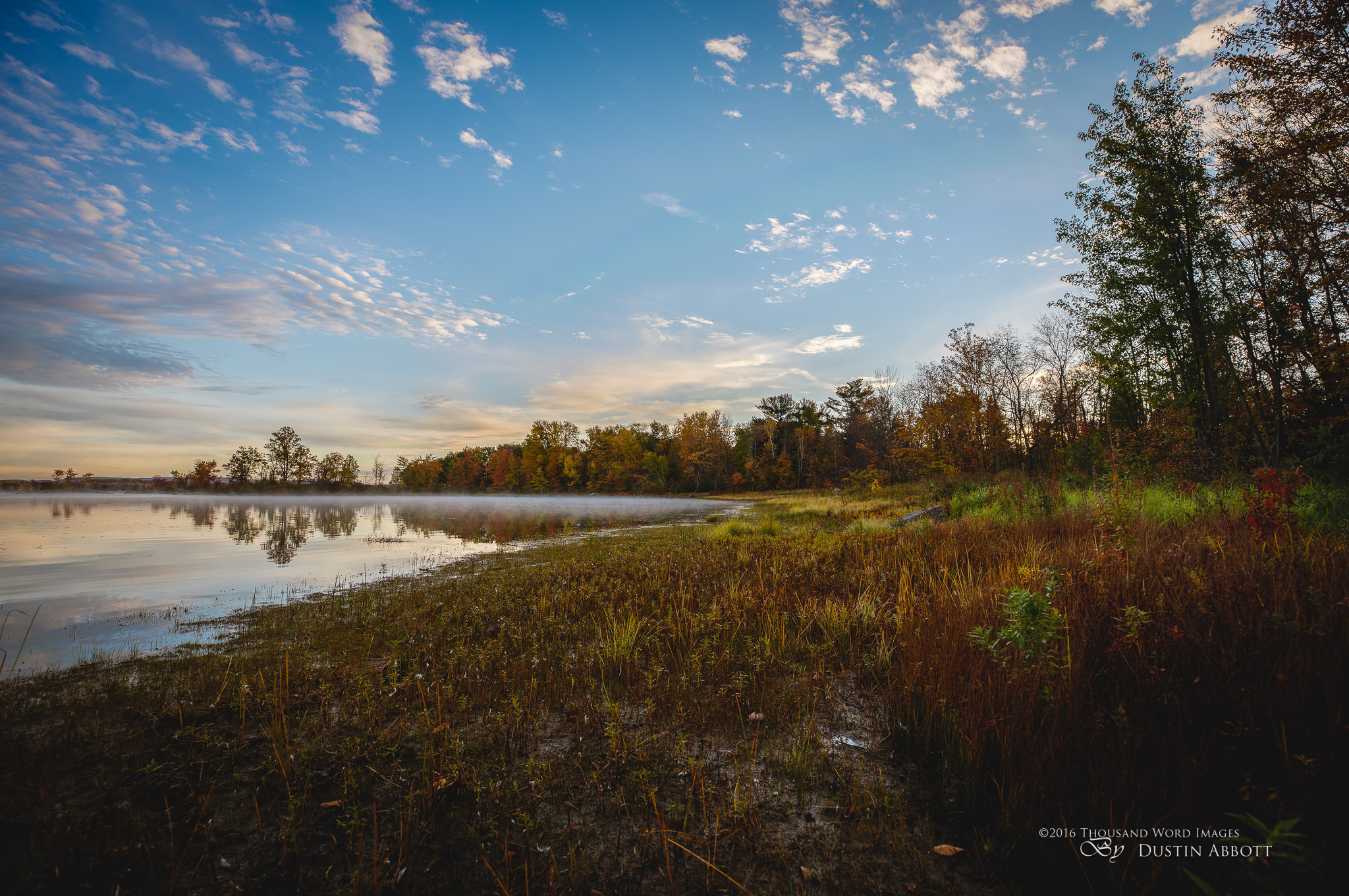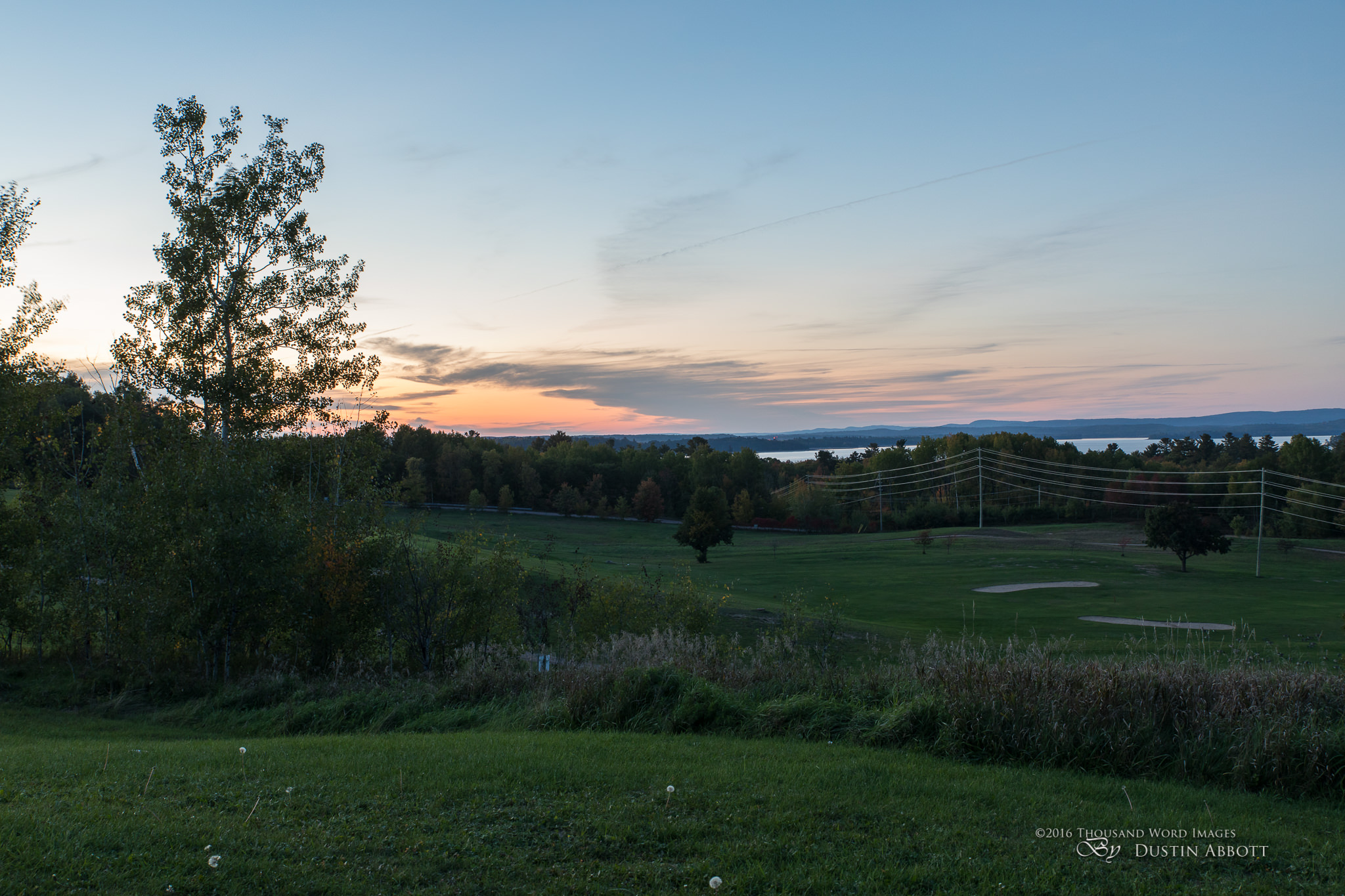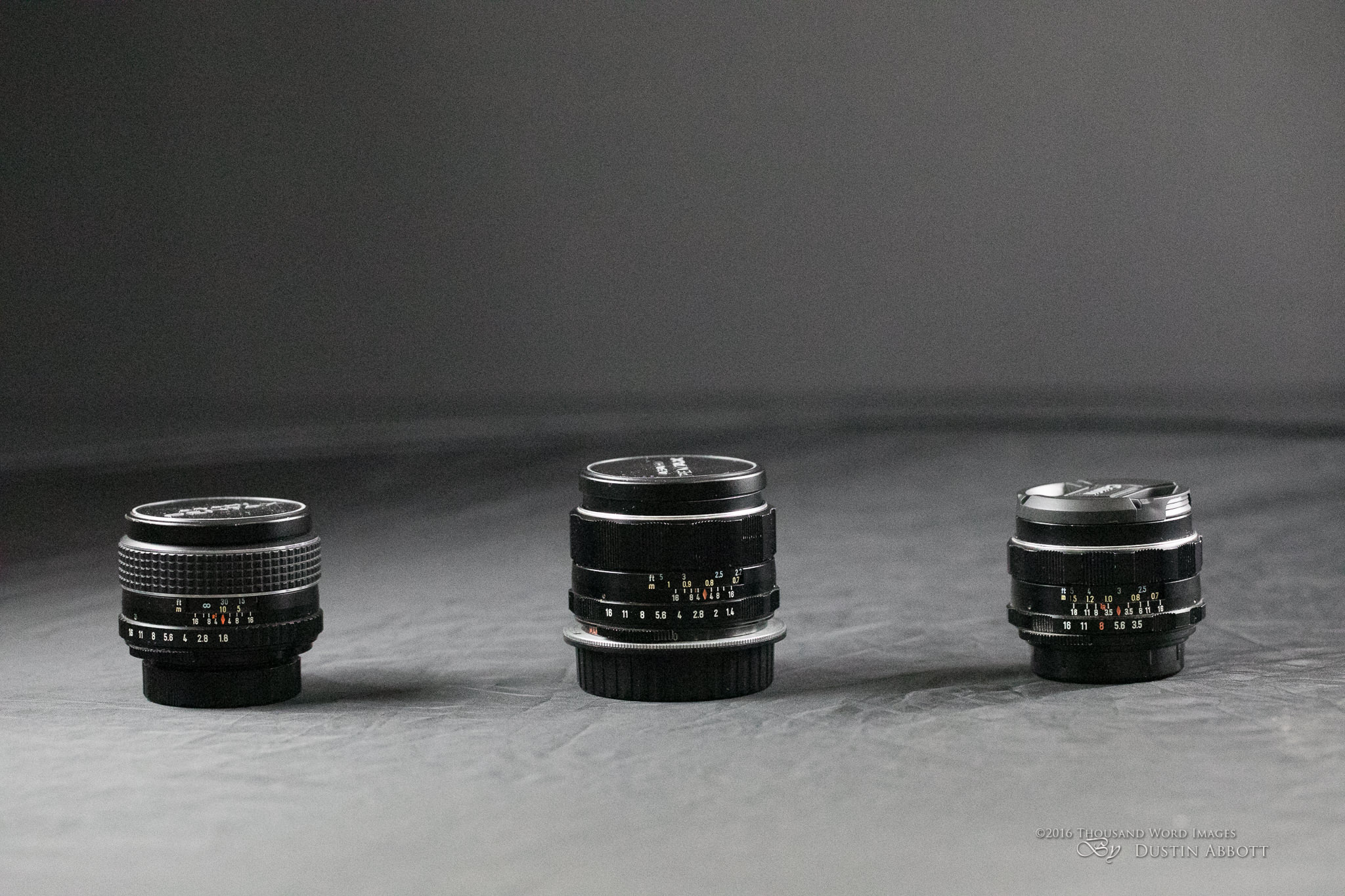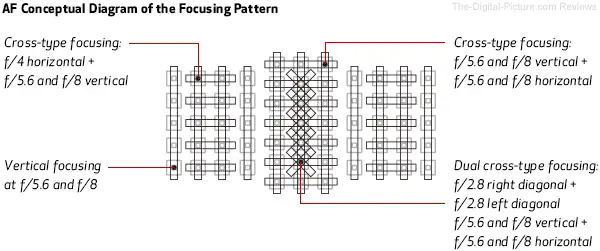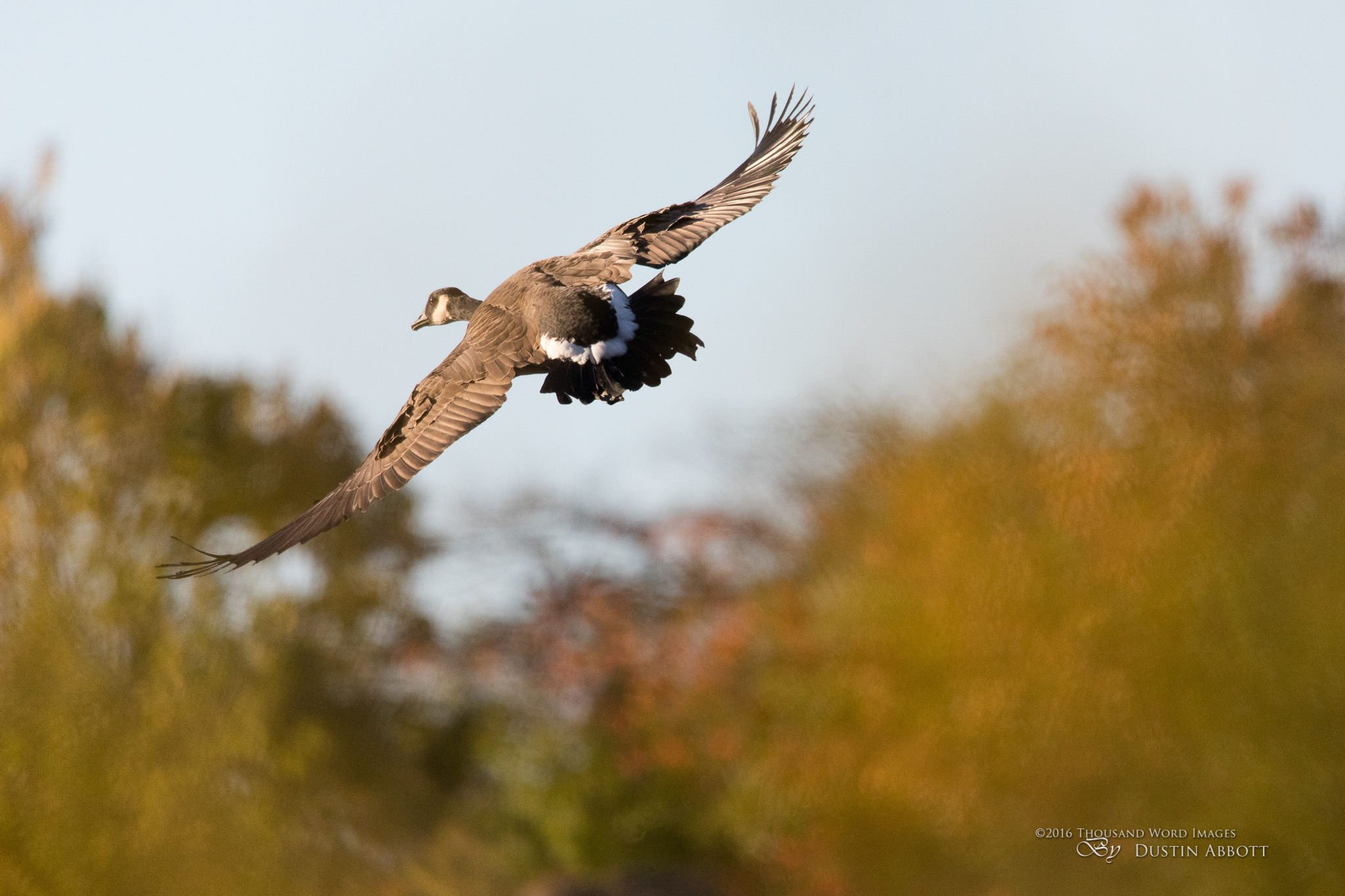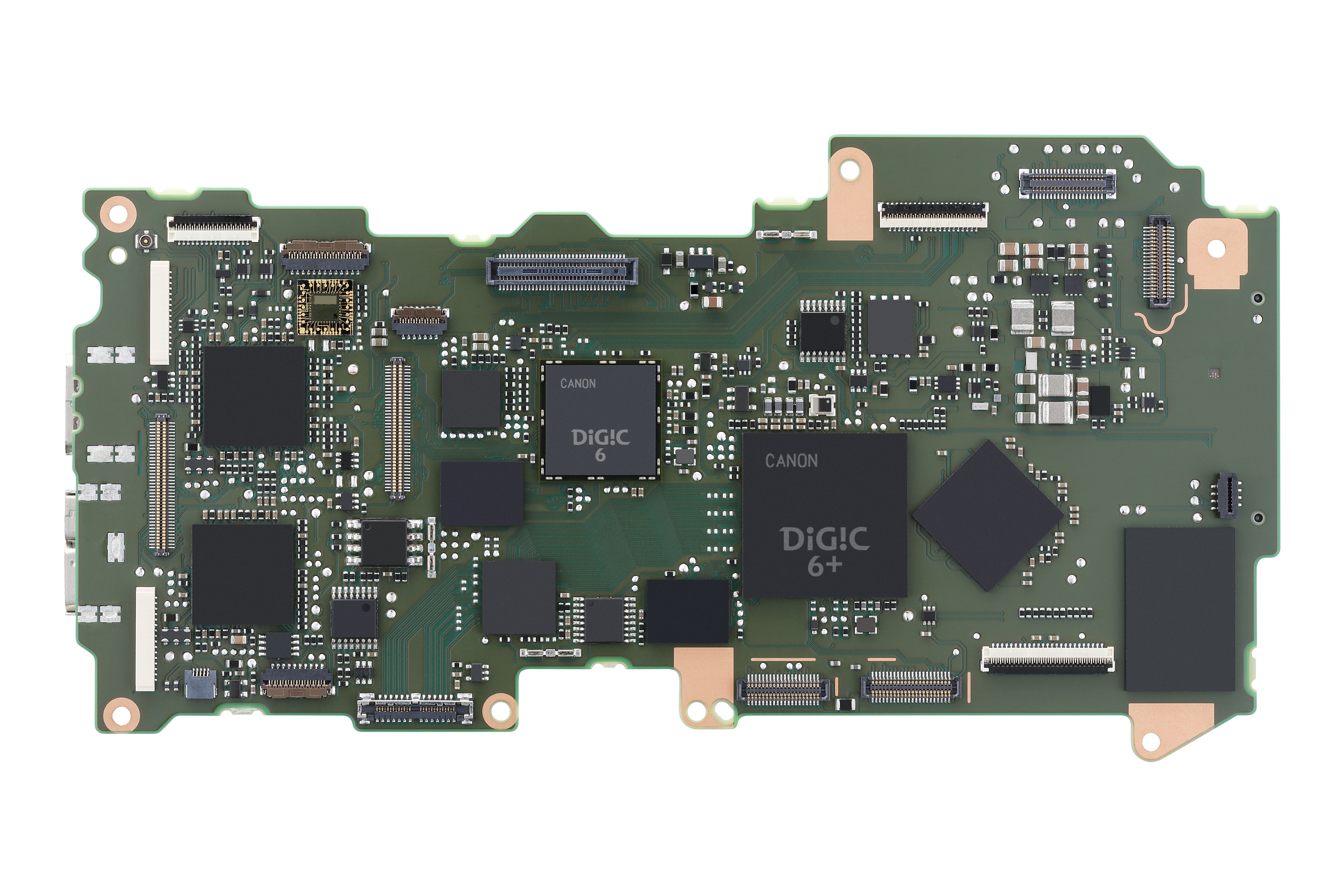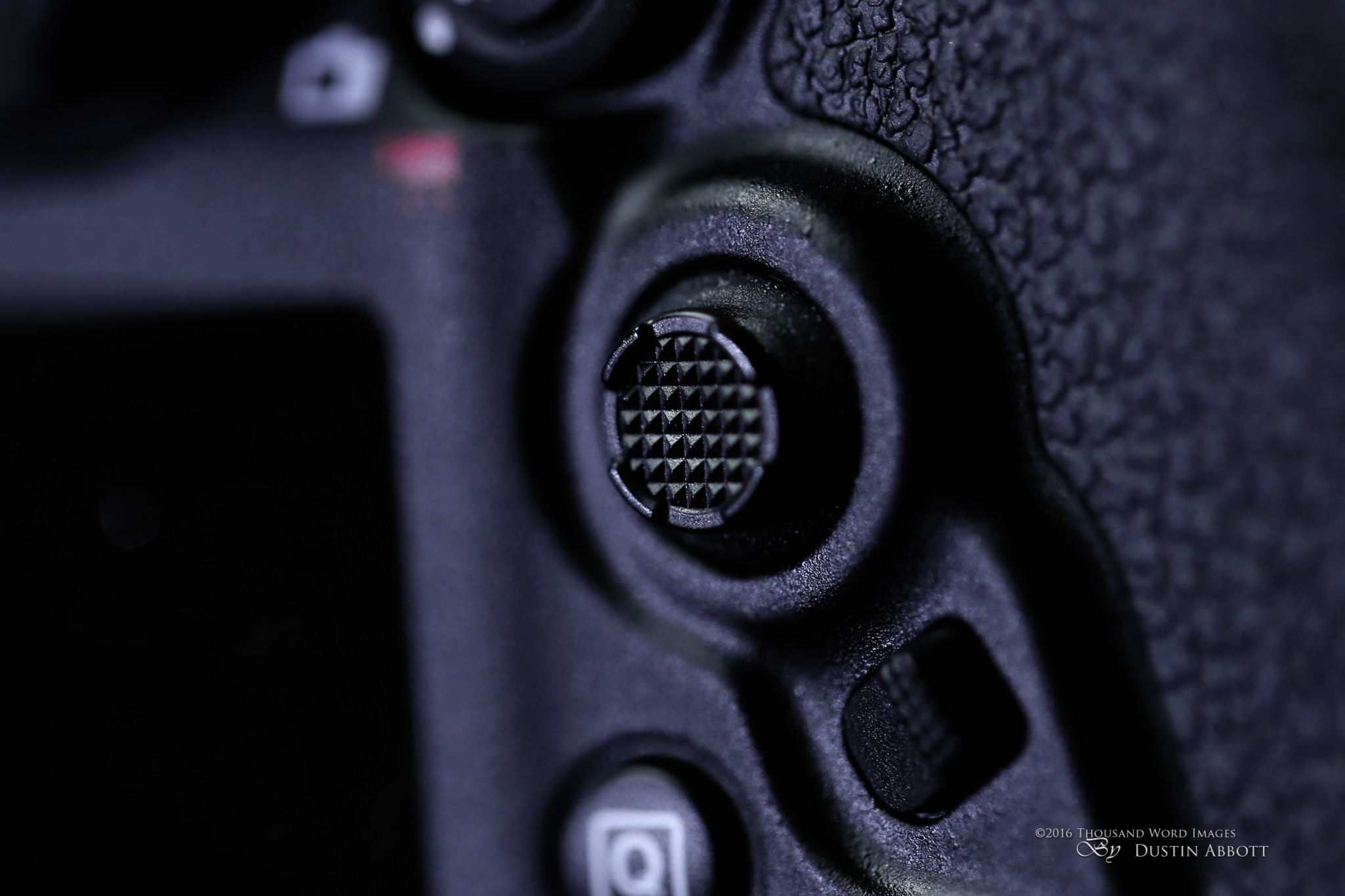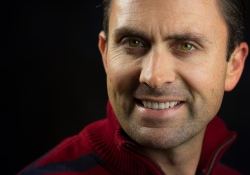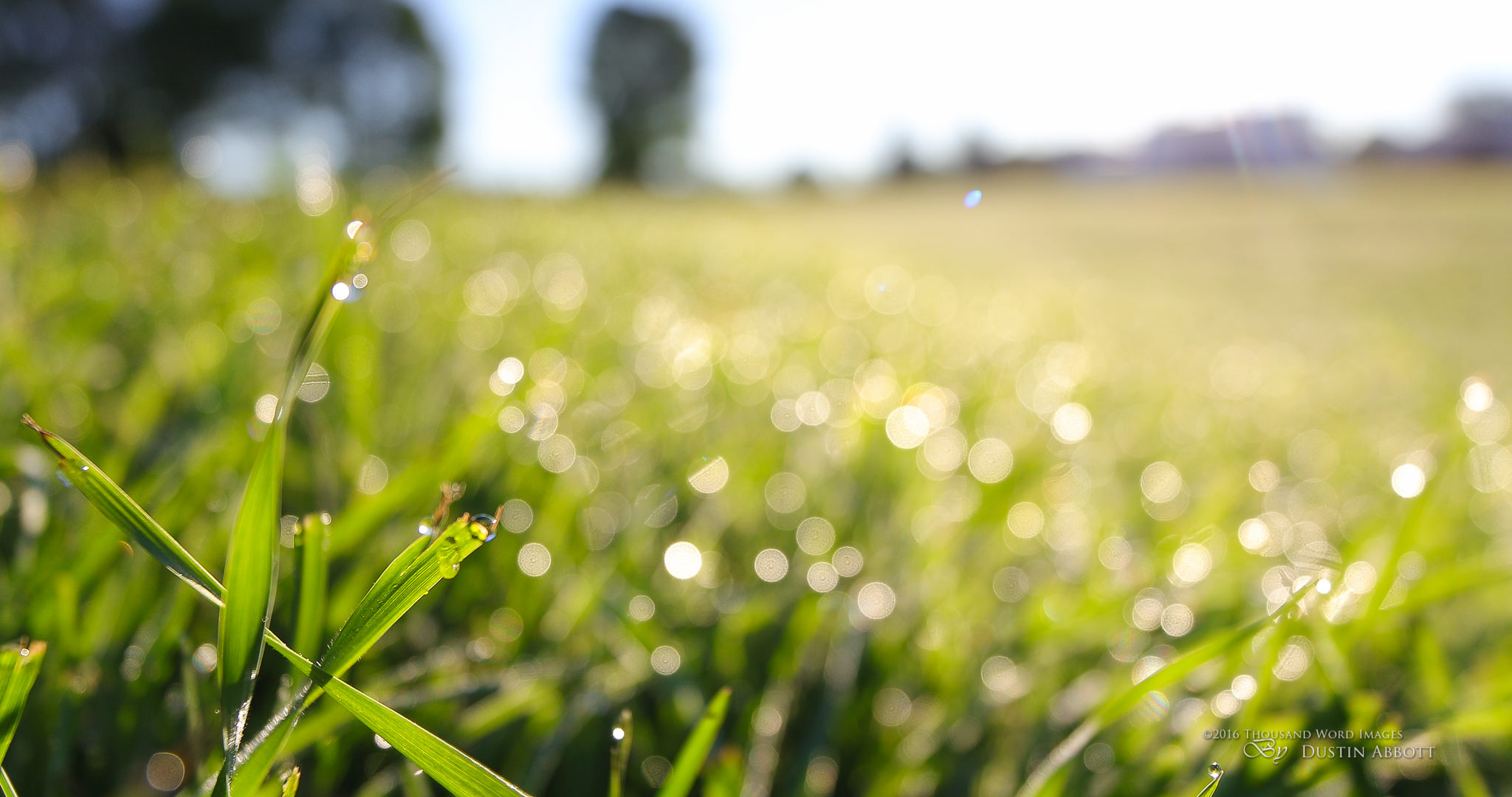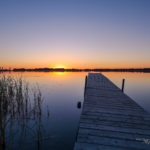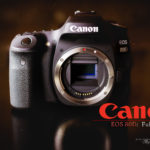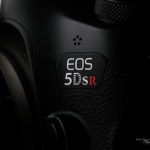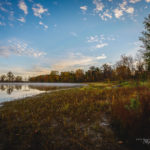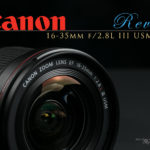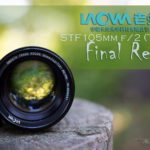Oh, the Drama!
Wow! When I made a video about preordering the day of the formal announcement of the 5D Mark IV, I had no idea that I was about to become embroiled in controversy. The initial response was positive from viewers (others than some complaints about the high price; complaints I shared). Then again, I’m rarely happy about the initial price of new Canon gear. Recent Canon lens releases (particularly the better ones) have been very expensive, though the lenses themselves have mostly been excellent (the new 35mm f/1.4L II is a great example). But over the next 48 hours the Internet hype machine got itself worked into a frenzy and before long I was getting more negative comments and dislikes than at any point in my decidedly non-controversial stint as a [very] minor YouTube personality. Why all the drama? Because I had the audacity to say that I was happy about the announced spec list of the 5D Mark IV and that I was preordering one.
Before I proceed to my actual review of the camera, here’s why I was happy. While reviewing the Canon 5Ds R, I found that it’s MRAW setting of 28MP hit a sweet spot for resolution for me, so I was very happy at the 30.6MP count of the 5D Mark IV. It also featured a number of the new innovations that the 5DsR had that really made life easier; things like a built in intervalometer, flicker detection, the white priority white balance, the Fine Detail Picture Style, and HDR mode. While reviewing (and owning) the 80D, I learned that I loved its responsive touch screen, it’s improved DPAF, the ability to focus at f/8 with a wide range of focus points, the improved dynamic range, and its improved video spec list. The 5D Mark IV had all of that. Finally, my most read article ever was about why I chose a Canon 6D over a Canon 5DIII in the previous generation, and some of the main reasons were its low light performance (both the sensitivity of the center focus point down to -3 EV, cleaner shadow performance, better high ISO performance) along with the useful features of Wi-Fi and GPS (both features that I have used a lot). Guess what? The 5D Mark IV had all of that, too. I was happy with the spec list because it combined a lot of features that I really like and use in real world shooting (and photography work) in one camera. So I preordered.
And caused a lot of controversy, apparently.
Before we move on to the actual review, let’s acknowledge the chief criticisms. Most of the complaints are actually from the video front. I heard a lot of “2012 tech” complaints that are mostly centered around the 5D4’s approach to 4K Video. People were disappointed at first that it featured only the 4K 30P standard; no 4K 60P. Then people discovered that the 4K video was delivered with a 1.7x (approximately) crop factor, and, to add insult to injury, at the space swallowing MJPEG codec. Lost in the shuffle was the fact that this would only be the second full frame camera (after the premium 1Dx II) from Canon to feature DPAF servo AF in video and a touchscreen to control video performance, or that it improved the 1080P capabilities all around. I can’t say whether or not the chief complaints were from those who actually use a DSLR for filmmaking or from those that are more into spec lists than real world cameras. Perhaps some of both. But this was the most vehement complaint.
One of the other major complaints was over the memory card slots. One CF, the other SD. People wanted CFast and XQD (or at least support for UHS II) cards. I’ll address those complaints in the review, but one of the first things I did was stick in a Lexar Professional SDXC 1000x card (150 Mbps transfer rate) and rattle off a burst. The result? 22 full RAW frames before it began to slow, which exceeds the 21 frame buffer rating. And this was from a UHS-II card, which is operating in “backwards compatible” mode. Furthermore, I was able to review the images by the time I had brought the camera down (though the red writing light stayed lit for a second or two longer). I shot another burst until it slowed, paused for a second, and then began shooting another burst. According to the time stamp I got 34 full 30.6MP RAW images in 8 seconds of shooting…on a SD card (and not even the best kind for this camera). My initial burst had 24 RAW images. When I got home I swapped out that card for my best UHS-1 card and upped that total to 28 RAW images before slowdown. The reality is for me (and most all non-sports shooters) is that this is plenty of performance from the SD standard. And beyond that, you can add more performance in burst situations be electing to go with a CF card.
I chose a Lexar Professional 1066x UDMA 7 as my primary CF card. This card had the fastest transfer rate. Using the CF card in optimal conditions I produced a burst of 32 frames before slowdown began. Clearly Canon has chosen to be very conservative with the buffer rating on this camera. That is more frames than what I am personally ever likely to need, and that’s probably true for 90% of shooters. True sports shooters will be better served by the 1Dx series or perhaps a 7DII (depending on the lighting conditions you shoot in).
I hear some complain that if Canon had gone with CFast that you could have unlimited buffer and just shoot RAW until the card is full. That does sound very cool, but how many shooters actually do that? When is the last time you just stood and shot as many frames as you possibly could of the same thing? By the way, if you really want to do that, just switch to JPEG and you can shoot until your card runs out of space. I personally tend to be a little more selective in my shooting because I know I’m going to have to edit all of those files when I get home!
My reviews are not of spec lists, though, but rather of relatively long term actual real world use of products. In the case of the 5D Mark IV I have been working on this review for 2 1/2 months, and am only now reporting my final conclusion on the camera. I have been publishing a number of videos that detail different aspects of the camera’s performance. You can view that playlist here, or you can elect to watch my final review here:
Ergonomic Improvements:
The physical body of the 5D Mark IV is going to feel very familiar to anyone who has used a 5D3, 5Ds, or 5DsR. Little has changed on the exterior with a few minor exceptions.
- The remote cable port has moved. The 5Ds/R body featured the change to the USB 3.0 standard (appropriate to accommodate the increased data flow). The female USB 3.0 port takes up significantly more real estate than the USB 2.0 port, however, so something had to give. What was lost on the 5Ds/R body was the headphone monitoring jack; a significant loss for videographers. The 5D Mark IV solves this problem by moving something to a different location, namely the remote trigger port. It now occupies the spot where the “Mark III” logo used to be on the front of the camera. The 5D Mark IV says “Mark IV” right under the 5D logo up top, with the “EOS” label in a slightly odd location above. It works, though, and we get the headphone jack back.
- New AF Mode selection button. The 5D Mark IV adds a little nub underneath the thumb stick that provides a redundant AF Mode selection (the little button near the shutter release still exists). This provides an improved ergonomic experiences as you are often using the thumb stick already to select an AF point. You can also reprogram it to some other function if you prefer.
- A touch screen! It cannot be overemphasized how big of a difference having a touchscreen makes. It makes navigating menus simpler. It makes using the the Q menu extremely quick and intuitive. It is also the touchscreen that makes DPAF so special for either stills or video use. Simply touch where you want the camera to focus…and it does.
It bears mentioning that they stopped short, however. The 5D Mark IV could really have used an articulating screen like the 80D. The touchscreen eases the blow of having to move/eliminate a few of the buttons, and the lack of the articulating screen makes using the 5D Mark IV less practical than the 80D for Vloggers, YouTubers, and other solo video creators. DPAF and the touchscreen is really cool when you are behind the camera, but who touches the screen when you are in front of it? I’ve already had a few segments blown where the camera did not grab focus on me for some reason and I couldn’t tell until after investing the 15+ minutes in shooting the segment. I discovered the workaround after a while, though, as the Canon Connect app now supports video monitoring. I can use my phone or a tablet to get a wireless live feed from the camera via WiFi, change settings, and even direct focus by touching the screen. It doesn’t solve the camera angle problem for shooting at high or low angles, though. I just feel that an articulating screen allows you to take full advantage of that great touchscreen and the extremely rapid DPAF focus. It not here, though.
Still, overall the 5D Mark IV is a very well executed camera ergonomically. It is very easy to do what you want on it, and I have quickly adapted to its layout and prefer it to any other camera.
It is also worth noting that the 5D Mark IV has a great viewfinder. You have the ability to really customize what information is shown in there, and the way the level is implemented has really helped me (particularly with certain lenses where I’m trying to minimize distortion). The only downside here is that I suspect trying to change out the focus screen for something oriented for manual focus (a matte precision screen) isn’t going to be easy (more like the 5DIII; less like the 6D).
Vastly Improved GPS
One of the things I really liked about the 6D was the inclusion of GPS. I’ve done a lot of traveling with a 6D body (or two), and coming home to images already accurately geotagged was very nice indeed. But I had one chief complaint about the implementation of the GPS on the 6D; you had two choices – ON/OFF. If you chose “ON”, it meant that the GPS was literally always on…even if the camera was turned off. This meant that if you happened to not turn the GPS off it would slowly be draining battery life off all the time. There was no practical limit to this. If the camera sat for a week or so the battery would go completely dead. I had hoped that Canon would fix this via firmware update, but that was not be case.
Fortunately it HAS now been addressed…in the 5D Mark IV. The Mark IV includes two different modes. One is like the 6D’s “always on” and should be chosen if you are in a circumstance where you are frequently turning the camera on and off and want to be sure every single image is properly geotagged. But the second mode is going to be far more practical for day by day use. In this mode the GPS is on but only when the camera is powered on (or in standby mode). When you physically turn the camera off the GPS is fully powered down and will not be sucking the life out of the battery.
Even in the latter mode, however, be prepared for battery life to take a hit when compared to the 5D Mark III.
Early Adopter Issues:
My 5D Mark IV was delivered literally minutes before I left for an extended business trip. I happened to have my Tamron SP 15-30 f/2.8 VC lens along (I’m was using it as a comparison point for my review of the brand new Zeiss Milvus 18mm f/2.8), and I noted that when I tried to activate Live View mode to test DPAF that the camera would not activate Live View with the Tamron attached (the Zeiss lenses were fine). It’s not unusual for Canon to introduce some new quirk for third party lenses when releasing a new camera body. Firmware update time; one of the downsides of third party glass on new camera bodies. Tamron happily agreed to take all of the my three “pre Tap In” lenses (24-70 VC, 70-200 VC, and 15-30 VC) to update in one fell swoop. While on this topic I should note the that 85 VC is a great fit with the new 5D Mark IV; it focuses very quickly and very accurately. The time invested via the Tap In console meant that it focused better than most of my other lenses before AFMA on the 5D Mark IV itself. The end results are gorgeous. I’ve seen more of an impact from the second microprocessor in the 85 VC’s focus on the 5D IV (which also has an added Digic 6 chip dedicated just to autofocus) than I did on previous bodies.
The older three Tamron lenses were back in my hands within a week and the Live View issue is fixed. The experience was quick, and relatively painless, but it was a reminder of why Tamron and Sigma’s move to create their consoles for quick updates at home on their newer lenses was such a smart move.
Another bit of good news is that Reikan FoCal support has arrived more quickly than expected. Over the past couple of months I’ve gone through the process of using it to calibrate my rather extensive collection of lenses. It’s a somewhat laborious process when you have so many lenses to calibrate, but getting optimal performance from my lenses is important to me. I will note that the addition of the touchscreen made this process much simpler when it comes to something like changing values in camera.
Adapting to a New Sensor
Whenever you move to a new camera there is a period of adjustment where you learn to either unlock the potential or accept the limitations of the camera. While the 5D Mark IV does have some limitations, I have found that it is a highly adaptable, customizable camera that in many cases can be set up to do what you want it to do. This does make the camera a little more intimidating for inexperienced shooters, but the 5D series is really marketed to more experienced photographers. My initial concerns about the image quality (and perhaps those from other reviewers) came before I had learned to unlock the potential of the camera.
At full resolution “out of the box” I found the JPEGs had too much “smoothing” for my tastes. I preferred the native JPEG profile from the 6D. I wasn’t blown away by the TIFF files I was getting from DPP, either, but on September 20th Adobe added RAW support for the 5D Mark IV and I was quickly in heaven. The RAW files are BEAUTIFUL out of the 5D Mark IV. So much sharper and such incredible processing latitude. HDR is going to be far less necessary in the future; the dynamic range from the 5D Mark IV is impressive!
Update as of September 29th, 2016: I did some tweaking to the profile in the camera (JPEG), and made sure all of the noise processing settings were off. I also did a firmware update today (1.0.2). Between those two things I am much happier with the JPEG images I am getting. They actually look pretty great now, and give a bit of a processing guideline for tackling the RAW images. They look good enough that when shooting RAW + JPEG you may be able to give your clients the JPEG images and they’ll be happy right out of camera. The JPEGs have really rich color and look like they’ve already been “post-processed” in a good kind of way. I have chosen the Fine Detail profile as my default mode, though with some tweaks to the sharpness and contrast. As I continued to fine tune the profile to my unique preferences I found that I was happier and happier with the JPEG output. After getting things where I want I’m now pretty delighted with the 5D Mark IV’s JPEGs and RAW files alike. The JPEG files also benefit from the improved sensor performance of the 5D Mark IV; you definitely have more leeway to “push” them a bit compared to the previous generation.
It is worth noting that the MRAW (17MP) setting is also very nice on the 5D Mark IV and provides one of the best options for shooting in very high ISO settings (more on this in a moment).
Resolution and RAW
If you compare the RAW files side by side with the Canon 6D (as I’ve done a lot of during my various comparisons), the RAW files from the 5D Mark IV seem a bit “flatter”. The contrast is a bit lower, and the “sharpness” is a little less pronounced. This is actually a good thing. Video shooters are familiar with a LOG type profile for video that delivers a fairly flat image that you can then impose your unique preferences to during color grading. I feel like a somewhat similar concept is at work here, and the added dynamic range produces a RAW file with less extremes “baked in”. Similarly it seems that the files both need and can tolerate more sharpening than what I’m accustomed to. Perhaps the antialiasing filter is more aggressive, but I find that the images DO sharpen up better and when I downsample the RAW images to the dimensions of the 6D or 5DIII there is clearly more sharpness in the 5D Mark IV images.
I do feel that there is a bit of a learning curve to unlock the full potential from the camera, and as photographers become familiar with it they will ultimately appreciate that potential.
Here’s a video where I break down the overall resolution and image quality from the camera.
As anticipated, I feel that the 30.6MP pixel count is a “sweet spot” for me. Images have noticeably higher amount of information to work with, there is more latitude for cropping, and yet the file size (and impact on your computer when processing) is far less onerous than it was with the 5DsR. Canon was able to successfully raise the bar in all other areas of sensor performance while also increasingly resolution by about 39% over the 5DIII (and 52% over the 6D). I loved the 5DsR, but I’m not finding that I miss the extra 20MP and the additional challenges that it’s extreme resolution provided.
I enjoy being able to significantly crop an image and still retain similar resolution to my 6D. Higher resolution bodies bring a pixel density closer to that of crop sensor bodies (though only the 5Ds/5DsR have a pixel pitch that completely rivals that of the higher resolution APS-C bodies), so the additional “reach” benefit of APS-C bodies is somewhat undone, particularly when one considers the image quality strengths of the full frame sensor. Look at this photo of a squirrel:
In this second shot I have cropped the image to the exact same pixels of my Canon 6D; look how much extra reach I had “baked into” each frame while still retaining as much resolution as the previous generation.
I’m definitely happy with the megapixel value that Canon chose here.
Dynamic Range
I ran a controlled test with the Canon 6D (rated as having the best dynamic range of Canon’s previous generation), the Canon 80D (Canon’s best APS-C sensor), and the 5D Mark IV to test dynamic range performance. The 5D Mark IV is rated by DXO as having Canon’s best sensor…ever, though in their tests it still lags a slight bit behind the Sony A7R II and a bit further behind the Nikon D810. I’m a Canon shooter, however, so I’ll confine my comparison to what I’m familiar with.
In this controlled test it quickly became clear that as you pushed the limits further the 5D Mark IV distanced itself from the pack. The 80D showed a clear improvement over the 6D, but the 5D Mark IV showed an equal advantage over the 80D in my tests.
Real world shooting has demonstrated the value of this to me. I find that I have more processing latitude, and it affects me in the real world. I’m better able to recover skies, and, as is common in Canada, I will often lift the shadows in trees. In the scenes that I frequently shoot there is often a pretty big exposure difference between the tree line and the open areas, so I often lift the shadows in the forested area. In the past this has often resulted in shadow noise as well as textures becoming a bit muddy. I’m delighted to be able to lift those shadows in files from the 5D Mark IV and retain great detail with minimal color noise. Here’s a number of photos before and after applying Lightroom sliders to recover them.
Not only that, but I was frequently up against the limits of how much I could raise shadows in the past. While I still frequently reduce highlights by 100% in Lightroom’s sliders, I’m finding that it is rare that I need to raise the shadows 100%. Often a value between 40-60% is plenty. I do find that there is increased latitude in the highlights, too, meaning that I am able to better recover highlights, though not even close to the extent with which I can recover shadows. As a result I’m finding far fewer situations where I feel that I need to employ exposure bracketing or HDR. The advantage to the single exposure is that you don’t have to worry about movement or other factors that are a threat to typical HDR work. Here’s a comparison of a 3 stop underexposed image processed as I would process the HDR image (second image is a three bracketed exposure HDR).
While I do prefer the overall tonality of the HDR image, this is an extreme example (-3 EV). A slightly underexposed image that retained highlight information (between -1 to -2 EV) actually often produces a better result in all but the most extreme situations. In these images the first image is a single RAW with the shadows recovered. At a pixel level all the textures are very sharp and crisp. There is no issue with the wind moving the grasses and creating ghosts because it is just one exposure.
The second image is a combination of three bracketed exposures. It shows some ghosting artifacts in the grasses and trees but also isn’t quite as sharp as the single exposure.
In this video I demonstrate the superiority of the 5D Mark IV to previous generation cameras.
I can tell that you that in a very real way I am discovering an improved workflow due to the enhanced dynamic range of the 5D Mark IV. Even the JPEGs have more processing latitude than previous generation cameras. From portraits to event shots to landscapes I’m finding that it is easy to produce a balanced, great looking image from the RAW files.
Canon’s claim of improved dynamic range is backed up in the real world.
High ISO Performance
In the previous generation the 6D outperformed the 5D Mark III at higher ISOs. Is there an improvement in the new generation? Canon’s challenge here is that higher resolution results in more apparent noise, as was made clear by their limiting the normal range of the 5Ds/R at ISO 6400. The 5D Mark IV has 52% more pixels than the 6D and 39% more than the 5D Mark III. Despite this they have increased the ceiling of the normal range to ISO 32,000 (from ISO 25,600). This is a somewhat odd jump and equates to roughly a third stop more, while the expanded range remains the same (ISO 51,000 and 102,000). The latter two should be considered useful only in the most extreme of circumstances, and, in fact, one might be better off shooting at a lower ISO and pushing the results in post.
Compared head to head to the 6D at native resolution I didn’t see much of an advantage for the 5D Mark IV, though when compared at downsampled resolution it looks better at most all ISO settings. It did exhibit less color banding than the 6D for the most part save at ISO 25,600 (and beyond). It is a clear advantage over the 5DIII, however, which was more prone to color noise and banding in the shadows. I did discover a potentially helpful trick, though. Using the MRAW setting (17MP) resulted in a demonstrably cleaner looking image at ISO 32,000 (or 25,600). Better contrast and apparent detail despite technically having less resolution due to fewer pixels. I consider this to be a very valid alternative in low light situations. Here’s a sample at ISP 32,000 at the MRAW setting.
It is worth noting that JPEGs at high ISO look pretty good and could potentially be “improved” by enabling some of the noise reduction settings for High ISOs (this is a matter of preference). Some prefer more sharpness even it means more noise, while others prefer a “smoother” image even it comes at the cost of some of the detail. The 5D Mark IV gives you some options for getting the results you want.
If you want more detailed coverage of this aspect of the 5D Mark IV’s sensor performance, I recommend that you spend a little time and watch this video episode.
I didn’t see a major step forward at higher ISO settings, but that is in part due to adding a significantly larger amount of pixels into the equation. The fact that Canon has managed to do this while still making some minor gains at higher ISO settings is positive. This is pretty much where sensor performance is at, and the competitors from other brands are delivering a similar performance with some give and take. I wouldn’t be surprised to find that this will be an area of strength for the new 6D Mark II (expected next year) which will almost certainly have a lower megapixel rating (current rumors have it at 24-25MP).
The bottom line is that once you learn how to take advantage of the potential of the 5D Mark IV you will find that it can deliver excellent results in just about every situation.
Autofocus Observations
While on paper the focus system is a similar 61 AF points to that of the 5D Mark III, this is an improved AF system in every way. Some have called the revised AF system in the 5D Mark IV its biggest upgrade. While the number of AF points is the same, they aren’t as tightly clustered as before, resulting in higher coverage of the frame. The top to bottom measurement of the two groups on the left and right has increased by 24%, while the larger center group’s measurement has increased by 8%.
It is now easier to get an AF point where you want it. I tested the 5DsR a few months ago, and while it was improved over the 5DIII in its metering system and added a bit more f/8 support, I still noticed a significant improvement in the 5D Mark IV. Everything seems to focus faster, including third party lenses, and I’m noting good focus accuracy from the system, too. As more and more people get the 5D Mark IV in their hands their feedback has been universally very positive. Focus is simply awesome in the 5D Mark IV.
Another strength of the AF system is tracking. It has Canon’s EOS iTR AF (Intelligent Tracking and Recognition) that works to recognize faces, colors, and shapes to help select the proper AF point and allow for more accurate tracking. The AF system in the 5D Mark IV actually employs a dedicated Digic 6 processor (in addition to the main Digic 6+ processor), which is part of why it is so vastly improved. The end result is that tracking a moving subject has never been easier.
You can unlock the potential of the AF system by becoming familiar with the 6 different “cases” that you can choose from in the AF menu. Each of these is customizable, but they have descriptions in which they detail the scenarios that they were designed for. Choosing the right case for your situation helps establish the focus priorities and will result in better tracking and focus priorities.
You have a number of choices for what focus points are active. Spot AF utilizes a reduced size single point (a dot within the AF point box) for the situations where you want pinpoint accuracy (put this point on the subject’s eye when shooting portraits!). Single point AF utilizes the single point but the whole focus point box rather than the inner point. The coverage grows a bit as does the potential for focus to be on something other than what you want (a nose rather than an eye, for example). AF Point Expansion mode supports the selected point with four surrounding points (to the four points of the compass). Zone AF utilizes the selected point plus the 8 surrounding points in a large square. Zone Large AF allows you to select the large group on the left, right, or center. Auto AF point has all 61 points active. Getting the most out of the AF system will require you to pair the right selection to your task. Put simply, the more AF points that you activate will result in the camera doing more of the thinking. In some situations this is advantageous (it’s quick!), but if you are shooting in more precise situations (and with large aperture lenses where depth of field is very small) you may want to use fewer points and make sure focus is happening exactly where you want it to.
You now have two choices for making the selection of how many points are active. The M-Fn button near the shutter release is the standard method (clicking it will cycle through the options), though there is now a redundant control right under the thumb stick on the back of the camera. I’ve been using it more often, as I’m usually there selecting focus points anyway.
The focus system of the 5D Mark IV is somewhat complex, and the reality is that some photographers will find themselves overwhelmed by it. I’ve had a number of photographers that have expressed to me that they preferred the simpler focus system in the 6D over the 5D Mark III because they understood how to the use the former but were overwhelmed by the second. Others strongly prefer the more complex system because of its many advantages. There’s no question that the more complex system is better in an absolute sense, but whether or not it is better for you will come down to your own comfort level with the more complex or your willingness to learn how to best utilize it. If you were already using the 5DIII, for example, you will probably be delighted with the 5DIV. If you are upgrading from the 6D you may be initially overwhelmed.
One of the great features on the 6D was the excellent sensitivity of its center point, which would focus down to -3 EV (moonlight, essentially). In some ways this actually made it a better performer than the 5D Mark III in low light despite having an inferior AF system. The 5D Mark IV has inherited that greater center point sensitivity, and even one-upped it by allowing for -4 EV focus in Live View via DPAF. Bottom line: you shouldn’t ever find yourself in a situation where you can’t autofocus some way!
I’m also finding that my third party lenses are now more confident in focusing – both in speed and in my ability to use outer points with them. The new Tamron 45mm f/1.8 and 85mm f/1.8 VC lenses are standouts in this regard (I’ve tweaked them through Tamron’s Tap In Console). Here are a few samples:
F8 Focus
One of the biggest improvements made to the 5D Mark III via firmware was the addition of the ability to autofocus at a maximum aperture of f/8 (the standard limitation is f/5.6). This allows one to shoot an f/5.6 lens (like a telephoto such as the 100-400mm II) with a 1.4x extender attached (which reduces the amount of light that can reach the sensor by 1 stop, meaning that maximum aperture is now f/8). Still, the 5DIII was only able to use the extra sensitive center point in this kind of situation. That meant that 60 of the 61 points were completely unusable in this situation. The 6D did not support f/8 focus at all.
I was impressed by the improved performance of the 80D with a lens like the Canon EF 100-400mm f/4.5-5.6L IS USM II and a Canon 1.4x teleconverter. It allowed one to shoot with that combination (a maximum aperture of f/8) at a variety of focus points – far more than what was previously possible (27 of the 45). The 5D Mark IV takes this a step further, however, and enables f/8 focus on ALL AF points, and 27 of them remain cross type for extra sensitivity to boot. This makes a huge difference, and I can honestly say that I saw little difference in the autofocus capabilities in this scenario than I did in any other situation. What has been (to me) a somewhat frustrating scenario now just works. AF is extremely quick and accurate with this combination. I was able to focus with this combination effectively even in low light conditions. It is as if Canon has figured out this tech (probably with the help of that dedicated processor) and it now finally lives up to its potential.
This section has included some shots taken at 560mm, f/8 (400mm + 1.4x TC).
DPAF
If you have never used Canon’s DPAF (Dual Pixel Autofocus), you are in for a treat. I’ve been shooting a number of comparison series with the 6D over the past month, and it shocking how painful traditional Live View focus feels after having used DPAF. The technology debuted on the 70D (and was revelatory then), matured on the 80D, and is simply a delight on the 5D Mark IV. Touch the screen (about 80% of the sensor area is covered) and the camera focuses almost instantly. While still not quite as fast as the traditional phase detect AF (through the viewfinder), the difference is now almost imperceptible. Focus is incredibly fast in DPAF and makes tripod based shooting in particular a real joy. Now if only the 5D Mark IV had come with that articulating screen…
Tracking is also very impressive in DPAF mode. The face detection is almost eerily accurate, and I’ve been using this feature on xxD bodies for my YouTube channel for the past several years as it allows me to film my episodes at larger apertures without worrying that my face will be out of focus when I’m in front of the camera. The addition of DPAF to the full frame 5D Series gives it a serious advantage over the competitors.
Video Observations
Bottom line: Canon has made a lot of people mad on the video front with the release of the 5D Mark IV. What’s interesting is that the implementation of 4K video isn’t radically different on the 5D Mark IV than it was on the 1Dx Mark II, though the release of that camera didn’t have nearly the same amount of drama. What’s mostly different is that the 5D series A) has broader market appeal and B) is viewed as more of a hybrid/general purpose camera than the more sports/wildlife oriented 1D series. But let’s step back and take a rational look at the reality of the video features of the 5D Mark IV.
It is actually a better video camera than the 5D Mark III…without question. It has more shooting options, a better sensor to work with, produces sharper video than the 5D Mark III, has a useful HDR video mode, and most importantly, it has DPAF video servo focus and that great touchscreen. It adds the ability to create time lapse movies in camera. It is one of Canon’s best ever 1080P cameras, lacking basically only a 1080 120FPS mode (that frame rate is limited to 720P). The footage looks great, and no one is talking about how incredible DPAF is at tracking and how nice this is to have on a full frame body. I loved DPAF beginning on the 70D, found the 80D even more improved, and this is a great implantation here. If you are behind the camera it really opens up so many options. Canon’s major misstep here was not going ahead and implementing the articulating screen that makes using the camera for vlogging and/or YouTube so much easier. If you missed the tip before, you can remotely monitor video through the Canon Connect app on your mobile device, controlling not just settings and modes but also simply pressing on your screen where you want the camera to focus. Very, very nice! Still, a lot of YouTubers and Vloggers want that articulating screen, and in the “selfie age” that we now live in I think Canon may have missed an opportunity to move YouTubers and Vloggers upmarket.
If the camera only supported 1080P, people would have loudly complained over the lack of 4K support, but would have had to conclude that at the least the 1080P performance was very good. But the camera does support 4K, at least nominally, and it is the nature of that support that raised so many people’s ire. The criticisms are largely focused on 1) the codec (MJPG) and 2) the crop factor.
The codec. Canon’s decision to only support the massive MJPG codec has caused a lot of hair pulling for a number of reasons:
- It’s huge. A 64GB card will only hold about 16 minutes of 4K footage because the bitrate is so high. Battery consumption is also pretty huge while recording 4K, and, of course, the massive file size adds a lot of stress on the processing end back at your workstation, too. If you move up to a bigger card (say 256GB), your battery will go dead before the card is filled.
- The footage is not correspondingly epic. That massive, uncompressed footage should blow highly compressed h.264 footage away, right? Not according to a thousand head to head comparisons already out on YouTube. The 5D Mark IV footage has pros (mostly due to the nature of Canon’s superior color rendition) and looks great, but not really better than the footage from other cameras at a tenth of the file size. The MJPG codec is clearly not implemented because of its intrinsic advantages.
The crop factor. There was a collective groan when it was discovered that Canon’s 4K support would not be utilizing the full frame coverage but would instead be a cropped portion of the sensor. That crop factor is, in fact, is a significant 1.74x. This means that shooting wide angle video is difficult. My widest lens goes to 15mm, which with this crop factor is slightly over 26mm. Ah, but it gets worse. Canon has persisted in not allowing EF-S (APS-C crop specific lenses) to be mounted here, which means that Canon’s lenses designed for a crop factor cannot be used here. The end result is there is going to be a lot of videographers mounting Sigmas and Tamrons on there (a lens like the Sigma 18-35mm f/1.8 ART will mount and function perfectly). Third party crop sensor lenses utilize the EF and not the EF-S mount, so they will attach to the camera where Canon’s own crop lenses will not. I’ve just started testing the new Laowa 12mm f/2.8 Zero D lens and it is actually a very intriguing lens for shooting 4K video with on the 5D Mark IV as the focal length after the crop factor is about 20-21mm; right in the sweet spot for wide angle footage.
There is, however, one very positive aspect of the 4K support. Canon has designed the implementation so that right in camera you go through footage frame by frame and grab JPEGs at a decent 8MP size. I can attest first hand that this in fact valuable, as the files are large enough (and detailed enough) to actually be useful. I’ve got an image gallery of images like this. Here’s one of those screen grabs here:
This could be valuable for catching crucial moments like the first kiss at a wedding, or to grab segments in portraits where your subject moves into position and you can choose that perfect moment from the sequence. It will also be useful for getting clean images of fast moving subjects like insects and hummingbirds.
There are other lesser complaints. While the 5D Mark IV does support HDMI out, it is limited to 1080P, and there is not a true neutral profile (C-LOG) that provides the kind of footage that filmmakers most value. The 4K framerate options are limited to 24 and 30FPS with no 60FPS option (which the 1Dx Mark II does have).
The 4K footage does look quite good. Here’s a few unedited samples of it (only transcoded into MP4 and pieced together).
I’m not a videographer, and to be honest I don’t have a screen in the house at the moment that supports 4K, although I do like the idea of having some crop latitude in my footage without sacrificing quality. I find 1080P content painful enough to upload to YouTube, so I’m in no rush to switch to 4K, but there is also no question that Canon did a lackluster job of implanting 4K support in the 5D Mark IV. This is something that people value and even something that many people expect in a modern DSLR. Canon is clearly trying to push serious filmmakers towards their more expensive cinema line, but there’s one problem: people have options these days. They can move to a far less expensive Sony a6300 and get very good 4K support (though that new camera has already been replaced with the recently announced Sony a6500…ouch!).
But you know what? I’m actually really enjoying the 5D Mark IV for video work. After I accepted the limitations of the 4K video, I’m actually enjoying using it here and there and marveling at the tremendously detailed footage. I love the 1080P on the camera due to the great DPAF, sharp footage, and flexible video modes. I wasn’t using any of my full frame cameras for video work before, but the 5D Mark IV has rekindled my interest in using full frame for video. The moire suppression is the best I’ve seen so far. I did an extensive video for my YouTube channel covering all the highs and lows of the 5D Mark IV’s video features here.
Despite the video implementation actually being good in a number of areas, I think that this was perhaps Canon’s greatest misstep. If they had included a MP4 option for 4K they would have had a much more positive reception from the video crowd. I think they may have underestimated how much backlash there would be over its omission.
Battery Hungry?
Canon’s DSLRs are usually pretty fantastic when it comes to battery life. The 5D Mark IV used the LP-E6N battery that has been the staple in the newest generation of Canon bodies, though it is also backwards compatible with the older LP-E6 batteries. Though the rating for the number of shots isn’t really down all that much, I found that due to all the tech on the 5D Mark IV I’ve been burning through batteries faster than typical. The primary culprit is probably the GPS logging, and make sure that Wi-Fi isn’t on when you don’t need it, too. Even using the GPS in the Mode 2 (where it shuts off when the camera is off) has an impact on battery life. I suspect the extra voltage going into focus has a negative impact on battery life as well. If you shoot 4K video, too, you are very likely to see serious battery drain. The bottom line is that I’m seeing a low battery indicator more often now.
I’d recommend putting a backup battery or two on your wish list.
Conclusions
The Canon EOS 5D Mark IV is a bit of paradox. It is simultaneously one of the best cameras Canon has ever created along with being one of its most divisive ones. Whereas the 5D Mark III was universally accepted as an excellent choice for both professional and amateurs alike, things have changed. It is my opinion that the 5D Mark IV is a better camera in every measure than the 5D Mark III, but is that enough for the 2016 market that it is released into? It has better autofocus performance (including vastly improved performance with teleconverters), better resolution, better dynamic range, better high ISO performance, and faster shooting and buffer performance. And, despite all of the drama surrounding the video performance, it is actually a better video camera than the 5D Mark III. It has more shooting options, a better sensor to work with, time lapse movie mode, a useful HDR video mode, and most importantly, it has DPAF video servo focus and that great touchscreen. While the 4K support is unquestionably flawed, the reality is that it does serve some purpose, the footage looks great, and the image grab from 4K video is actually useful.
If the 5D Mark IV was being compared only to Canon cameras, it would be declared a smashing success. But things have changed since the release of the 5D Mark III, particularly on the video front. Nikon’s D810 still combines a higher resolution sensor with even better dynamic range, and the D820 may not be far off. Sony and smaller players like Fuji and Panasonic have demonstrated that quality 4K video can done in a mirrorless or DSLR form factor. Canon’s choices regarding the 4K implementation on the 5D Mark IV seem to have disenfranchised a lot of people, particularly considering that it is more expensive than its competitors (in some markets by a LARGE margin) and when one considers that the 5D series created the hybrid video/stills market. Time will tell whether these protests will affect sales, but the initial “mood” towards the camera was mostly negative (watch that change as people actually USE it!) In short, people expected more, realistically or not, and even the most positive are having a hard time justifying the implementation of the 4K video.
5D bodies are known for implementing some new technology, and while Dual Pixel RAW undoubtedly has useful future applications, the current form has extremely limited value. The amount of adjustments that you can make to focus, bokeh shift, and flare are so small as to be mostly imperceptible. Having Dual Pixel RAW enabled essentially doubles your file sizes, making them larger than those of the 5DsR and its massive 50+ megapixels of resolution. It also ties you (at least for the present) to Canon’s own Digital Photo Professional software to enable those effects. In its current form DPRAW holds no real attraction for me.
But at the same time I pride myself in be reasonably objective. I’m not going to fuss and complain over a camera I’m actually very happy with. If you, like me, are primarily a stills shooter who does some video, then you are going to love this camera. I think it may just be Canon’s best stills camera so far, combining a high resolution, high dynamic range sensor around Canon’s best focus system so far outside of the 1Dx series. The camera is ergonomically excellent and I find shooting with it a joy. It just does what I want, without fuss. A tear down from Roger over at Lens Rentals shows that it is more robustly sealed then previous generation 5D bodies. I love the images that it produces, and the file size is fully manageable. After some tweaking I love the JPEGs, and the RAW files have loads of processing potential. Most important to me is the ability to create amazing images, and I genuinely feel like I have greater potential to do that than before.
In short, Canon has (mostly) lived up to the potential that I saw when I looked at the specs and was delighted by them. After two and a half months of using the camera I am confident that this will be my workhorse for the next three or four years. I find it hard to rant and rave over a camera I’m personally very happy with.
But neither can I disagree with those who are highly disappointed over certain aspects of this camera, particularly when it is coming in at a very expensive price point that is significantly higher in every market save the US, it seems. Even though I had the money put aside for the Canon EOS 5D Mark IV, I almost changed my mind over putting in my order. But now that the money is spent and I plan to focus on enjoying the camera and letting it pay for itself. Bottom line: if you are debating whether or not to purchase the 5D Mark IV, do a realistic evaluation of your shooting needs and then consider if the 5D Mark IV meets those needs. It is in most ways an exceptional camera despite some of the early ranting on YouTube and the message boards. But once the drama is over and people move on, I suspect that you’ll find a whole lot of people shooting with and loving this camera. I will be one of them.
Pros:
- Improved autofocus performance that is now exceptional
- The best rated sensor from Canon yet
- Great dynamic range
- Strong high ISO performance despite MP upgrade
- Higher resolution while retaining reasonable file sizes
- Inclusion of a touchscreen and DPAF
- Inclusion of WiFi, GPS, Intervalometer, and NFC
- Improved burst rate and buffer depth
- Outstanding ergonomics
- Anti-Flicker, White Balance priority modes
Cons:
- Expensive (extremely so in some world markets)
- Questionable 4K implementation
- Dated memory card standard support
- Battery life has decreased
- No articulating screen
Gear Used:
Canon EOS 5D Mark IV (5D4)
![]()
Shopping in Canada? I bought mine from Simons Camera. If you use code CEAB when ordering from them you will receive a free Canon Collector Edition Accessory Bundle.
Canon EOS 6D DSLR Camera (Body Only)
Adobe Lightroom CC Software for Mac and Windows (Boxed Version)
Adobe Photoshop Creative Cloud 1-Year Subscription
Alien Skin Exposure X (Use Code “dustinabbott” to get 10% anything and everything)
Purchasing your gear through B&H and these links helps fund this website and keeps the articles coming. Thank you for your support.
Great News! I can now offer a 5% discount on all purchases at Amplis Foto, Canada’s Leading Photographic Supplier. Please enter discount code: AMPLIS52016DA in your cart. It is good for everything in your cart, and is stackable with other coupons, too! It will take 5% off your entire order! Proceeds go towards keeping this site going and providing you with new reviews!
Check me out on:
Google+: | Facebook: | Twitter: | Flickr: | 500px: | Sign Up for My Newsletter :


